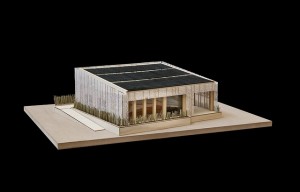The Ohio State University Readies for Its Encore at the Solar Decathlon
Monday, April 18, 2011By Erik Hyrkas
Editor’s Note: This entry has been cross-posted from DOE’s Energy Blog.
In honor of the U.S. Department of Energy Solar Decathlon—which challenges 20 collegiate teams to design, build, and operate solar-powered houses that are cost-effective, energy-efficient, and attractive—we are profiling each of the 20 teams participating in the competition.
The Ohio State University team is getting ramped up for its second run at the Solar Decathlon this fall. After placing 10th in the 2009 competition, the team is looking to bring a bigger, tougher, and more efficient house to this year’s event.

The Ohio State University team meets in preparation for Solar Decathlon 2011. (Courtesy of The Ohio State University team)
Mark Walter, associate professor of mechanical engineering, provided an insider’s perspective.
“Our goals are not too different [compared to 2009],” said Walter, who is also a faculty advisor to the team. “With the additional experience, we’re looking to reach out to the community and really bringing the best possible product to the Mall.”
In addition, Walter said the team is looking to solve sustainable design problems with its original house through better efficiency, tighter construction, and smarter engineering.
The enCORE house is based on a concept that promotes putting all the mechanical systems in the center of the house and using exterior components such as walls, shades, windows, and the roof to help control the temperature and produce energy—all while leaving ample living space for residents. The house has two bedrooms, one bath, a den, a living room, and kitchen space as well as a patio and gardening area.
“We really see this as a fully functional home for a family of three. If you think about a New York City apartment having 800 square feet, there’s really no reason this can’t have the same feel,” said Walter. “With added space, we can do a lot more. Last year, we had a lot of reconfigured space with smaller rooms. This time we have separate spaces and more room.”
enCORE is also unique in that it will likely be the first house in the history of the Solar Decathlon to have a roof covered entirely in thin film solar cells. Walter explained that because the competition’s limits on roof size were increased, the same efficiency can be achieved using thin film solar technology, cutting costs tremendously.

An enCORE design model (Credit: All Commercial Photography/U.S. Department of Energy Solar Decathlon)
This second house from The Ohio State University also incorporates passive design strategies with super-insulated walls, roofs, and windows. The team also has more students on construction and engineering this year, many of which have learned from their previous experience in Solar Decathlon 2009. Sixty-five students are currently on the roster, with 15 core students on the team—three more than during the last competition.
The Ohio State University team is looking to improve in all categories this year. Walter said that, after the competition, the team is looking to exhibit enCORE for a year on campus or use it as a residence for visiting scholars.
For more information about The Ohio State University team and enCORE, visit its website or official Facebook page.
Erik Hyrkas is a correspondence writer for the Office of Energy Efficiency and Renewable Energy.
Tags: Ohio State, Solar Decathlon, Solar Decathlon 2011, Teams
